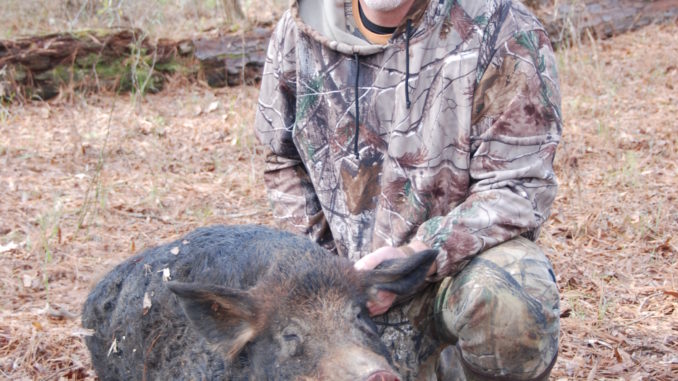
Wild hogs cover much of South Carolina, offering plenty of hunting opportunties.
Don Houck and another hunter crouched together just around the corner of a food plot and peered into the pre-dawn darkness. The full moon and high-powered optics allowed the pair to scan the far end of the green patch in search of the quarry.
“Just to the right of the corn pile,” Houck said. “It’s a big black ’bo hog. See if you can slip around there and get a shot at him.”
A little maneuvering, a little slipping, and the big hog was centered in the crosshairs, soon to receive a healthy dose of ballistic tipped lead. At the report, the boar shuddered from the impact of the .308 slug and charged into the undergrowth before mortality caught up with him and put him down just out of sight.
Houck is a founding member of the 17,000 acre Belfast Hunt Club in Allendale County who has been hunting this land for the past 25 years. With 12 miles of riverfront along the Savannah River, Belfast is dead center of hog central.
“I put five bags of whole corn on this spot day before yesterday,” said Houck. “There’s hardly any of it left.”
Surprisingly, all of the stands that Belfast members have placed for deer are not as attractive to hogs as might be believed, even the ones that are baited with corn. Houck said that the stands adjacent to water, those surrounded by river bottom, creeks or swampy areas are preferred by hogs, but even then, certain stands seem to be more favored than others by the invasive animals.
“It’s not hard to tell where the hogs have been,” said Houck. “They root up the ground; they rub on the trees and even wear paths out in the undergrowth. We do our best to kill every one of them we see, but they still keep coming back.”
Wild Pigs. Hunters love them and farmers, landowners, and biologists hate them. Sounds like a good environment for a reciprocal approach to land and wildlife management. If pigs had the life habits of deer, it probably would be. But unfortunately, that’s not the case.
“For us, pigs are a negative on our land because they’re in competition with the deer and turkey for the available acorn crop or whatever you’ve planted to feed the game animals,” Houck said. “Then, of course, there’s the rooting up of the ground. I mean, we’ve got fields you can hardly ride a tractor in because the hogs have tore it up so bad.”
On the other hand, Houck admits the pigs on his property and neighboring areas make for some additional hunting opportunities, particularly after deer season shuts down.
“We hunt them from our deer stands,” said Houck. “This time of year, you can control pigs better with timed feeders than you can deer. The pigs will lay up in a thicket nearby, and soon as the feeder goes off, they’re there. They almost know what time the feeder is going off.”
After deer season, Houck is not as concerned about making noise in the woods and loves to stalk pigs, particularly the bigger boars, and he prefers to take them with a crossbow or compound bow.
“I like to sneak up on a pig when I’ve got the wind in my favor,” he said. “ I’ll get behind trees, and I can always get within 30 yards, enough to shoot them with the bow. Their sight isn’t that good, especially at dusk or right at daylight, and you’d be surprised how easy you can sneak up on those pigs.”
Houck typically takes a different stance on where he aims kill a pig. He always wants to connect with a deer’s vitals, but for pigs, that isn’t always enough.
“If you’re shooting a hog with a rifle, if you can, shoot him in the neck or the head,” he said. “A pig, especially a big boar — which is what most people want to shoot unless they want one to eat — can carry a bullet a long way before they drop. The layers of fat will cover the hole ,and they don’t bleed out like a deer.”
“Usually, if I’m hunting with a bow, and I’m trying to get rid of them, I’m going to shoot for the heart area. I’m still going to try to kill him. If he doesn’t fall right there, that’s fine, I may or may not find him later, but I usually shoot the body with a bow.”
The fact that wild hogs, aka feral pigs, are so prevalent across the state is not a matter of coincidence, according to Charles Ruth, deer and turkey project leader for the S.C. Department of Natural Resources, who by way of protecting the latter, has become the state’s leading expert on hogs.
“You’ve got to remember that these hogs were not here in pre-European days. They’ve been in the lower Savannah River drainage and in some areas along the immediate coast since DeSoto came up on his Southeastern tour in the 1500s,” Ruth said. “But it’s really only been in the last 15 or 20 years that they’re starting to show up outside of Lowcountry swamps, up on the hill in these little isolated pockets in the Piedmont as well as in the mountains.”
Ruth describes wild pigs as a non-native, invasive species. Like most invasive species, fish or game, the animals themselves are not entirely to blame for existing in certain areas they otherwise would not have been. Ruth said their rise in popularity has made them desirable to hunters, who have transported hogs from one area to another with the intent of getting them established as ex-post facto game animals.
“The scenario probably goes something like this — somebody in a Piedmont county went down to Allendale or Hampton on a deer hunt and saw a pig, shot a pig and said, ‘Dude, let’s get these things started at home.’ There’s no other explanation for it. Pigs showed no tendency towards migrating away from the swamps on their own,” Ruth said.
Now that the cat, or in this case, the pig, is out of the bag, biologists and land managers are at a loss for how to put them back in it.
“Some laws have been passed in the last six or eight years that have tried to slow this issue down. There’s a law now that says you can’t remove a hog from the wild alive without a permit or transport it without a permit or release it,” said Ruth. “It’s one of these typical things where the damage has already been done.”
Ruth’s hand has been forced to embrace the animals as non-game game animals. As such, he encourages hunters to trap them, hunt them and kill them, wherever they’re found.
“My advice to people is to hunt them like a deer,” he said. “The caveat is finding a piece of property where they are. Even though we talked about what a nuisance they are, and they’ve spread to all counties, their distribution is much, much less than deer or turkeys.
“Where you have them, you can have a terrible number of them,” he said. “On the other hand, you can go for a long ways and have no hogs until you come up on another one of these little, isolated populations. A lot of the places in the Piedmont where they have gotten started are along some of these Piedmont creeks, river and things like that. But, on the other hand, you’ve still got isolated up-on-the-high-ground situations like there are in the mountains.”
DESTINATION INFORMATION
WHERE TO FIND HOGS — The wild hog population has spread across the entire state of South Carolina. Hunters and landowners regularly see wild hogs or feral pigs in the mountains of the upstate all the way to tidal regions along the coast. Historically, the largest concentrations have been in the river basins of the Pee Dee, Congaree, Santee, and Savannah rivers, but the population has become so widespread that almost every river system, swamp, or lowlands can claim a huntable population.
BEST TACTICS — Stand hunting is more common among deer hunters who may target hogs before or after deer season or have chance encounters with hogs while deer hunting. Look for signs such as hog wallows, mud rubs or rooting in lowland or bottom areas. Hogs are mostly nocturnal and move more in the early morning and late evening hours. Hog hunting on WMAs is permitted, but eligible weapons vary with whatever season is in progress at the time lands. Check out the rules and regulations that apply to the time period you intend to hunt at www.dnr.sc.gov.
GUIDES/HUNTING INFO — Cherokee Run Hunting Lodge, 704- 301-7959, www.eatsleephunt.com; Black River Plantation, 843-382-2200, www.blackriverplantationsc.com; Gruber’s Hunting Preserve, 843-563-1159; Cypress Creek Hunting Lodge, 877-520-2245, www.cypresscreekhunting.com; Bang’s Paradise Valley Hunting Club, 803-267-2825, www.pvhc.net; Buck & Boar, 866-799-5585, www.boar-hunter.com; Paradise Valley Farms Hunting Club, 888-297-5375, www.pvfhc.com. See also Guides and Charters in Classifieds.
MAPS — Swine Map, S.C. Department of Natural Resources, www.dnr.sc.us; Delorme South Carolina Atlas & Gazetteer, 800- 561-5105 www.delorme.com.

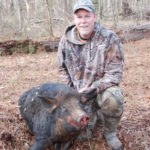
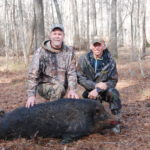
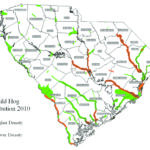
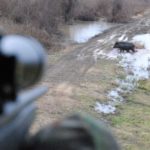
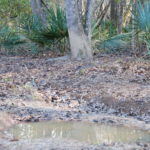



Be the first to comment